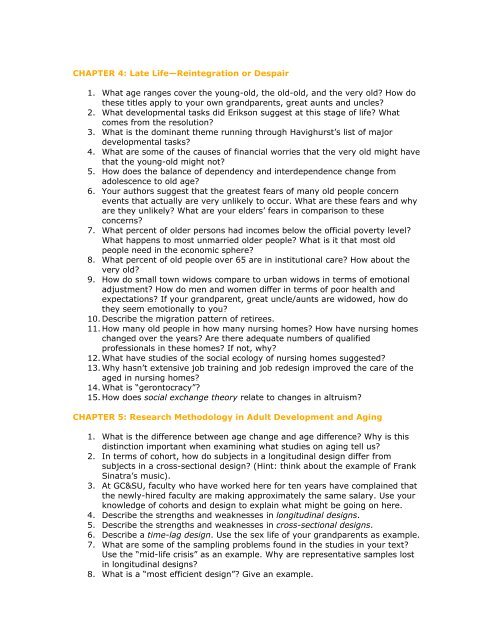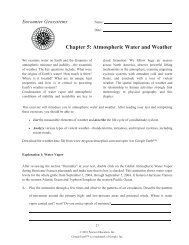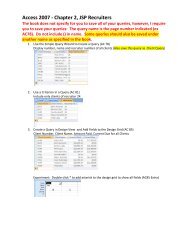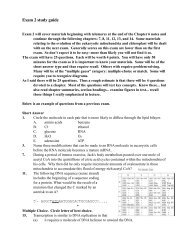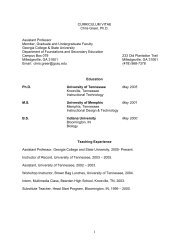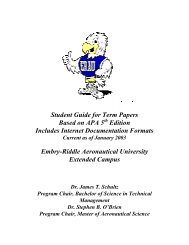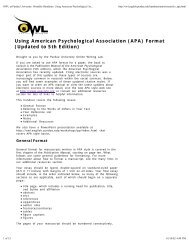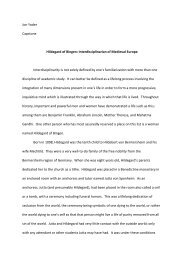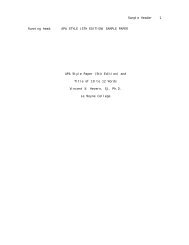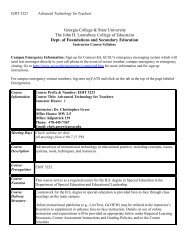study questions
study questions
study questions
- No tags were found...
You also want an ePaper? Increase the reach of your titles
YUMPU automatically turns print PDFs into web optimized ePapers that Google loves.
CHAPTER 4: Late Life—Reintegration or Despair1. What age ranges cover the young-old, the old-old, and the very old? How dothese titles apply to your own grandparents, great aunts and uncles?2. What developmental tasks did Erikson suggest at this stage of life? Whatcomes from the resolution?3. What is the dominant theme running through Havighurst’s list of majordevelopmental tasks?4. What are some of the causes of financial worries that the very old might havethat the young-old might not?5. How does the balance of dependency and interdependence change fromadolescence to old age?6. Your authors suggest that the greatest fears of many old people concernevents that actually are very unlikely to occur. What are these fears and whyare they unlikely? What are your elders’ fears in comparison to theseconcerns?7. What percent of older persons had incomes below the official poverty level?What happens to most unmarried older people? What is it that most oldpeople need in the economic sphere?8. What percent of old people over 65 are in institutional care? How about thevery old?9. How do small town widows compare to urban widows in terms of emotionaladjustment? How do men and women differ in terms of poor health andexpectations? If your grandparent, great uncle/aunts are widowed, how dothey seem emotionally to you?10. Describe the migration pattern of retirees.11. How many old people in how many nursing homes? How have nursing homeschanged over the years? Are there adequate numbers of qualifiedprofessionals in these homes? If not, why?12. What have studies of the social ecology of nursing homes suggested?13. Why hasn’t extensive job training and job redesign improved the care of theaged in nursing homes?14. What is “gerontocracy”?15. How does social exchange theory relate to changes in altruism?CHAPTER 5: Research Methodology in Adult Development and Aging1. What is the difference between age change and age difference? Why is thisdistinction important when examining what studies on aging tell us?2. In terms of cohort, how do subjects in a longitudinal design differ fromsubjects in a cross-sectional design? (Hint: think about the example of FrankSinatra’s music).3. At GC&SU, faculty who have worked here for ten years have complained thatthe newly-hired faculty are making approximately the same salary. Use yourknowledge of cohorts and design to explain what might be going on here.4. Describe the strengths and weaknesses in longitudinal designs.5. Describe the strengths and weaknesses in cross-sectional designs.6. Describe a time-lag design. Use the sex life of your grandparents as example.7. What are some of the sampling problems found in the studies in your text?Use the “mid-life crisis” as an example. Why are representative samples lostin longitudinal designs?8. What is a “most efficient design”? Give an example.


